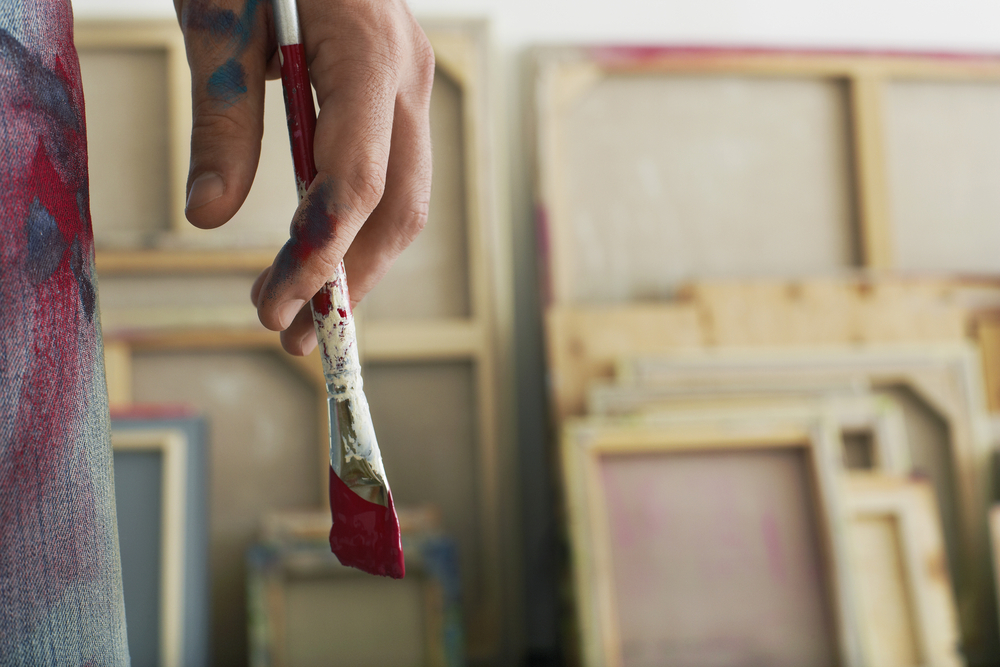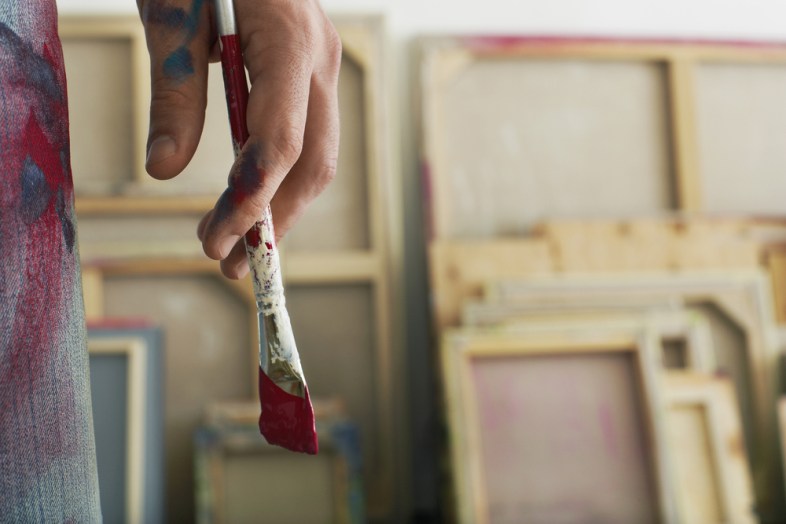Artists Don’t Need To Know How To Draw
As Derrida would say: there is no raw food, no culture without writing, no pure humanity.


Marc Lafia creates all kinds of images, usually with photographic technology (but he’s not a photographer in that he doesn’t seek to capture the world through photographs; more on that momentarily). He recently created a book of his images, along with some essays (including a foreword by me), that includes the re-imaging or re-photographing of other images — from nature books, from Tumblr, from many sources. (I wrote here about a show he had several months ago >)
A friend of mine was looking at the images and while she found many of them beautiful and intriguing, she kept looking for the original creator. Why doesn’t he include the source of the image? she’d ask, repeatedly and with increasing urgency. She began almost to get angry. She needed to know who created the image in order to judge it. Just looking at it was not enough.
When I pushed her, she insisted that art begins with drawing. The artist, she maintained, should be able to draw what’s there. I didn’t push her on where ‘there’ is. What if it’s that mood there? Or happens to be a sensation way over there? Anyway, she maintained that then, and only then, can the artist move into concepts and abstraction. The implication was that whoever created the so-called original image was the true artist; Lafia’s images were just reproductions.
I once believed the same thing. I’m not sure where I got this idea from or where my friend got it from. It’s some kind of strange Platonist ideal that must float through the ether and into our skin. Of course, many art schools used to believe this and, I suppose, many still do — hence the insistence of studio classes as the core curriculum.
Why Platonist? Because this literally antiquated belief conceives of art as mimetic. First comes the world, then come images of the world. There is an implied hierarchy of the real: the real is real, duh, and images are references to the real, coming after the fact, paling in relative comparison.
This prejudice is repeated in a different form in Maslow’s hierarchy of needs. First comes bodily survival — food and shelter. And then comes a whole lot of other stuff — safety, family, self-esteem— before you get to creativity and art. While Maslow might feel art is an apogee of human existence, he still believes, like Plato, that it’s fundamentally unnecessary. Art is ornament; it’s secondary. There’s first the so-called real world and then, and only then, can we move into representations of the world, into images, into art.
Nietzsche gives us a very different view. Art, he argues, is primary. Man is first and foremost an artistic being. His first creation is himself as a continuous being, as a social being capable of making promises. This first artist used his body as a canvas, whipping it and marking it into something more interesting, at once a kind of body art, sculpture, and conceptual art. For Nietzsche, man doesn’t emerge from the state of nature through reason. He leaves his beastly ways because he has an instinct to create. And that is the birth of man as a social creature — not his drive for safety, security, and survival, not his considerable cognitive reasoning, but his instinct for art. (For Nietzsche, the entire edifice of science and knowledge is an elaborate sculpture that’s forgotten it’s art.)
As Derrida would say: there is no raw food, no culture without writing, no pure humanity. Food is always already cooked, writing is always already happening, and humanity is always already enculturated.
Drawing, then, is not the basis of art. Creation is the basis of art. There is in fact no correlation between one’s ability to draw the world as it is — to draw realistically — and art. In fact, I might go so far as to say they’re opposed! It’s a nifty skill, for sure, and not to be poo pooed at all. But the ability to draw a vase that looks like a vase is just not art. It’s copying. And art, by definition, doesn’t copy. It creates the new, even if always from within the life of the old. (Art repeats, it doesn’t copy, and the definition of repetition is the introduction of difference, of living through what has been in a different way, pace Deleuze. But that’s a longer discussion.)
We come to the world of images as images. As Henri Bergson says, all is image. We can use the word matter or the word image, it’s the same. All there is is all this stuff we are always perceiving. Everything is experienced as an image — my face, these words, that painting, these photographs, that idea, my love, your needs and desires. They’re all images.
This is why I don’t call Lafia a photographer. Photography is haunted by Plato. After all, isn’t a photograph just a copy? Photography has been cast as a way to capture the real — to find those key moments in life and monumentalize them. Think about the ‘great’ photographers — Ansel Adams, Weegee, Diane Arbus. They all are loved for how they capture what is. This is not to knock them at all; I love much of their work — not because they capture the real but because they take the real and create something new. I only point out that photography is still premised on the real, even as photography’s very existence undoes the sanctity of the real.
What’s beautiful to me about photography is that it uses the real as samples, as fodder, to create a new real, another real. This is precisely what Lafia does: he takes images from anywhere, from everywhere, all the images making their way through the ether, and uses them to create new images (he does more than this for sure). The original image doesn’t matter; what matters is the new image.
The artist is not the one who accurately depicts reality — whatever that is — but is the one who can spin, hedge, juxtapose, fold, maneuver in such a way as to create some kind of new perceptive and affective experience. That is, the artist creates new things to see, new ways to see, new ways to feel and experience the world. This has nothing to do with drawing. Yes, it sure helps if the artist has some technical skills — painting, coding, thinking, writing, drawing, exploding, filming, lighting, doodling. But these are all modes of something more elusive, something more mysterious: creating the new from within the old. ![]()

